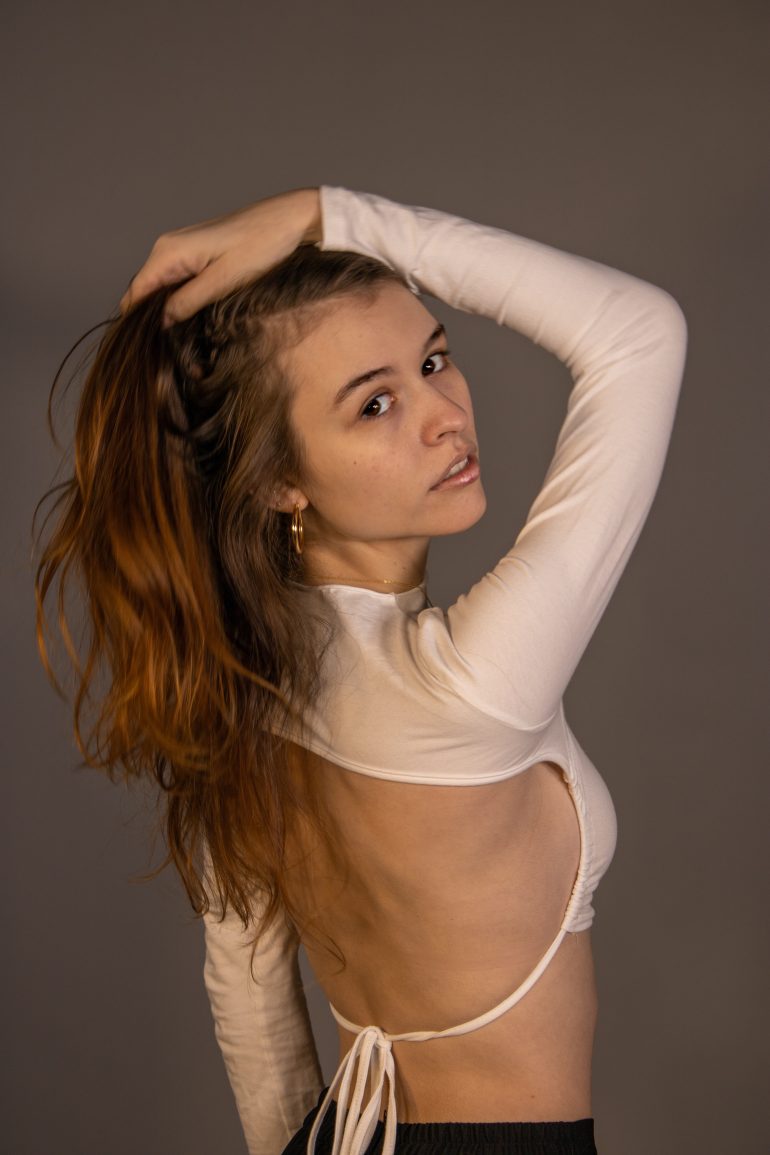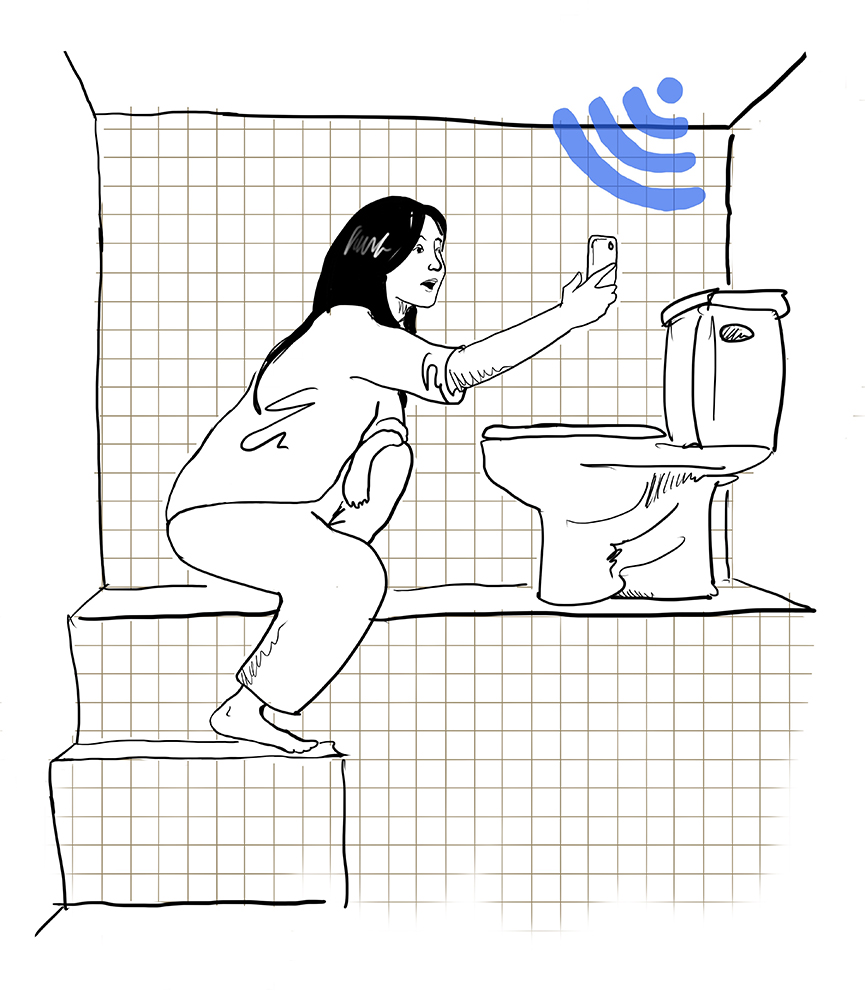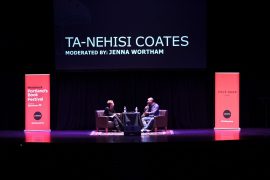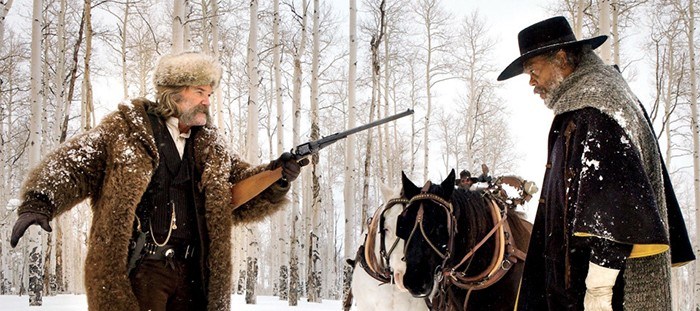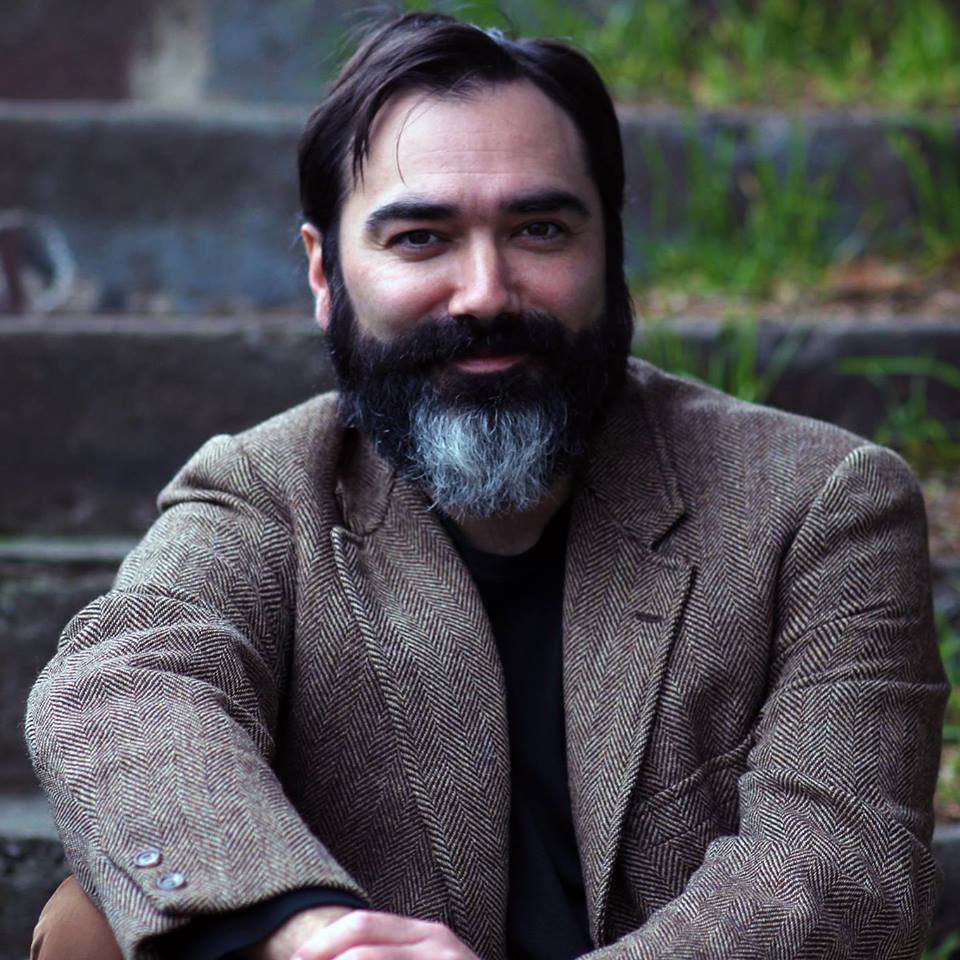Claire Miles is the star of this month’s Portland State University student feature. Claire was raised in Portland, getting her start in photography here in the city before taking her passion on volunteer trips. Now she’s an avid travel photographer, as well as a fashion photographer. From speaking with her I found that she has a unique perspective on finding her own artistic roots, and that she has ambitious plans to foster growth within her art community.
CM: My name is Claire Miles and I’m a new student. I actually just transferred, this is my first term. I came from U of O. I just wanted to be in Portland, so I thought I’d come to this school instead.
CB: What kind of photography do you do?
CM: I dabble. I definitely do a variety of kinds. I started out with a lot of nature. So I love that, that’s kind of where my base is. That’s where I started and it’s one of my favorite things to do. But recently I’ve gotten into more human subject photography and photographing people, and that’s always interesting because you really get to see someone’s personality come through.
CB: What inspired you to move towards photographing people?
CM: I did one of my friends’ senior photos and that was really fun. We all drove out to the beach and took his pictures. I’m really into fashion and I’ve been getting into fashion photography, and that’s super fun.
CB: Tell me about your fashion photography?
CM: I like styling too. So you put together an outfit and a set to go with it. Get a whole scheme going. Then you do photography, and that’s also a place you can do more interesting poses. So, it’s also more interesting for people who like to model, and I have a lot of friends who model.
CB: Could you give me an intro on digital and film photography?
CM: Yeah! So the difference between digital and film is that on the digital you have a screen and you can pull up the photos right away. It takes them and you see it kind of like on your cell phone. Then with the film photos it processes on the film as a negative and then you’ve got to do the whole chemical process to bring it into a photo. It’s not just an automatic computerized motion. And I usually shoot on 35mm film, which is just the standard most people shoot on.
So I started with digital. Film is really really new for me but I’m completely smitten. I’m in love with it. But, I started with digital. I started pretty early. I think that I took my first class on photography when I was nine or ten. It was just a little class at a local university offered for kids over the summer. It was just an intro to digital photography. We didn’t really go out and do anything. You took pictures and then brought it into class and talked about it. Then when I was probably twelve or thirteen I took a class where we did go on field trips and take pictures. That was just so much fun. I met a whole bunch of people who also loved to do this thing. And it was just a really good way to network. Then I started doing it myself. My uncle would lend me his camera, and I’d go around and take pictures of stuff. Then over the summer my mom and I would take road trips. So we love, I don’t know if you’ve seen the documentary, the docuseries Wild Wild Country?
CB: No I have not.
CM: It’s about the Rajneesh cult. That was a cult here in Oregon. So, one summer we decided to drive out to see the cult, like where it was, because it’s in Oregon. So we drove out. It was supposed to be near the Oregon desert. There were rusty old trucks, and broken down houses. It was just such a cool place, and it totally sparked my heart again. Then I started just to take pictures of everything. I started traveling and doing travel photography. I went to Peru when I was eighteen and got to see Machu Picchu. Taking pictures there was just incredible. When I was nineteen I went to Fiji, and at that point I had my own camera and I got to take all of these beautiful pictures of this beautiful tropical land. I met this girl there, she’s now a friend of mine, and she had a film camera. She was taking all of these pictures and I was just like “Oh, that’s so cool!” And she was actually from Utah. So, in December 2019 she came to visit me and we drove out to the Oregon coast and we spent a few days hanging out and catching up. She was showing me all the photos from Fiji, these film photos, and I was just like, “This is incredible. I wanna do this.” So I asked my mom, she had this old film camera, and I asked her, you know, “Could I borrow that? Are you going to use it anymore?” And she’s like, “No, you can just have it!” So, then we went on a family trip to San Francisco in January to visit with my mother’s godparents and my grandmother’s best friends, since one of them she’s known since she was thirteen and she’s now eighty-five. So [Claire laughs] long friendship! So we went to see them, ‘cause they were on a cruise. They like to cruise. They’re British, so we never get to see them because they live all the way across the pond. So, we met them there and I brought the film camera and I had some film and I started taking pictures. Then everything shut down. So, I haven’t really gotten to work with film as much as I wanted to but hopefully that’s going to take off soon. And I really wanna include that in my more human subject based photography. Because I think that’s something that doesn’t get done as much anymore.
CB: Include what in your human based subject photography?
CM: Shooting with film. There’s a lot of portrait photography and a lot of fashion photography happens digitally because it’s, you know, easier to edit and photoshop and advertise with. So, I think it’s really kind of an art that’s been lost like portrait photography on film. I have an art minor, and I’m hoping to take a darkroom class at PSU. Because I really wanna to learn how to produce my own photos.
CB: What kind of camera do you use?
CM: I got my own for myself for my high school graduation. I took it to Peru and started doing all that. It’s a Nikon. I think it’s a 34 100. It’s just a pretty common one. But it’s really nice and light. So it’s portable, and I got it refurbished with this whole kit, so it all came together. I haven’t used the tripod much but I do really wanna learn how to use those more because I think that would really enable me to do some more long exposure, and stuff like that.
CB: What’s the style you lean toward with your photography?
CM: Well, since I do so many different kinds I don’t really have like one style that I like to do. But I do often find myself drawn to black and white photography. It’s definitely one of my favorites, and it’s super simple and it just makes everything really tonal and poignant.
CB: Do you keep that in mind when you’re doing other types of photography?
CM: Yeah, I do. For a little while I worked with some friends who have a little photo studio setup, and we took some pictures of some people. With that one, having a nice neutral backdrop I was able to just take pictures and have it automatically put to black and white. With portrait photography, I really like to be playing with shadows, stuff like that. It just makes it dynamic and it’s always more crisp and clean in black and white because, you know, we were a start up thing. It was kind of a pinkish gray background, and the lights were a little warm, so it wasn’t always super crisp if you put it in color. But black and white just made it look perfect. And it always does.
CB: What are some of the most memorable photography sessions or photographs that you’ve taken from your travels?
CM: I would say definitely Fiji was a big one for me. Because Fiji, . . So it started in Peru where I was signed up to do volunteering with animals. It was this sanctuary zoo. I didn’t end up staying there because I didn’t feel like it was really much of a sanctuary. It felt more like a zoo. So I was like, “I’m stuck in Peru for another five weeks, and I’ve paid for all this time to volunteer, so I’ve got to find something to do.” So I said, “Why don’t I do something out of my comfort zone?” And I chose to do construction. It really opened my eyes up and I learned a whole bunch of new skills. I got to work with my hands and that was really amazing. I took some pictures there and it was really fun, just to see a community come together. That was really special. But it wasn’t so much artistic, you know? It was really more of just memorable photography. We were working on a preschool, and because it was the only preschool they had while we were doing this super janky unsafe construction, ‘cause none of us were trained professionals, we’re all just volunteers, so we’re like, slabbing together bricks to make a wall to the best of our ability while there’s three and two year olds running around under us. And we just have to hope we don’t drop a brick on them. It’s just super unsafe. But, you know, it’s the best that we could do. And they could do. I wasn’t really a kid person, I was just like, “They’re kind of sticky and messy and clingy.” But when I saw those kids they were just so cute and just making the best of it and never complaining. It just opened my heart. So the next summer when I decided to do a volunteer trip I decided to go to Fiji and volunteer with kindergarteners. And I did. I have all these photographs of these children and all their bright colors and their big smiles and it’s just so beautiful. I’m really proud of those photos. I loved those kids, and it just makes it so much more emotional.
CB: What did the kids think about the photos? Did you give them the photos?
CM: Oh yeah! They loved it! They got to take some photos, I have some photos that they’ve taken of people’s feet and their eyes and of rocks and stuff. ‘Cause Chloe [Claire’s friend from Utah] was there, too. She had a camera, too, so we’d give them our cameras and just let them run around. But yeah, it was a ton of fun.
CB: Have you continued your photography while you’ve been at PSU?
CM: Yeah I have. Recently I’ve been getting back into walking. I used to be this big avid walker. I’d walk around my neighborhood all the time, like two times a week. I’ve recently gotten back into it, and I’ve decided that while I walk I’m going to start taking photographs, because, you know, that’s one way to really get to know my neighborhood well is to photograph it; to see all these things from this time in my life just laid out there. So, I started to do that and I’m doing it on film, so I don’t have them developed yet. But I’m working on a roll right now, so, probably soon.
CB: How do you find your motivation for the photographs that you take? Where do you start?
CM: I take really subject based photos. I’m not the kind of person who’s like, “I’ll just take a photo of whatever, and I’ll see if I can make it into something.” I’m someone who really likes to take pictures of something as it is and make it special. I’m a super philosophical person. I like to think about life’s big questions and stuff like that. One of the things that I believe is that reality is fleeting, and instantaneous. The second we start to process what’s happened, it’s subjective and the reality’s gone. I think that photographing things and taking pictures of things is really this magical way of capturing reality. You know like, if I have a picture of a flower that bloomed in the spring no one can tell me that flower didn’t bloom. I know it did, I have this photo of it. I think that that’s always what motivates me. Just seeing the reality of something as it is and being able to capture that and say that, “This was happening as this, at this time.” I think that it’s important to have philosophy and everything in your life, because if you don’t have that then I feel like life tends to be a little shallow and hollow.
CB: Can you tell me about any inspirations or influences you have from other artists?
CM: Yeah, I have a lot of friends who do photography and that’s usually how I get my inspiration. That’s how I started doing film, and that’s how I started doing portrait photography and fashion photography. Someone’ll be like, “I’m doing this thing! What are you doing?” And I’m like, “Yeah I’ll try that out with you!” Or they have these things that they do and I’m like, “Wow can you teach me how to do that?” I’d say that peer support is number one for me. I just think it’s important to learn from your community and then give back to the community. I think that nowadays with social media, marketing, and branding, everybody’s trying to set themselves aside and, you know, everything’s a competition and everybody wants to be the best and recognized for what they do. That’s just not realistic. It’s not rewarding, and it’s so much better to just have a small community of art and appreciate one another’s art and, you know, who says that art needs an audience? Does that even ruin the art if it’s performative? Why not make art for yourself and for your community? I think that’s one of the best ways to learn, because if you just keep growing together the sky’s the limit, you know? There’s no stop to growing when growth is communal. But when you grow out of a community, you’re growing alone, and you’re not going to grow as far.
CB: Just curious then, have you ever gone to photography galleries, or events? What has that experience been like if you have?
CM: Yeah, I’d say one gallery that really shifted my views on photography was right after I got home from Peru. It was probably three or four weeks into the term. The craziest thing happened when I was in Peru, where when I was doing construction I met this guy, and he was like, “Where are you from?” I’m like, “I’m from Oregon, going to go to U of O.” He’s like, “Oh, there’s another kid here who goes to U of O!” And he introduced me to this guy, Will, and he grew up like fifteen minutes away from the school that I went to, and he knew a whole bunch of people that I knew, and we met each other in Peru! Then we both got back to U of O and we hung out a few times and he told me, you know I was new to campus, and he was a sophomore, and he was like, “There’s an exhibit at the museum.” It was Cusco photography, which was the town we were in. Cusco, Peru. It was these really beautiful photographs of Cusco throughout the decades. There were some really old ones and then there were some more recent ones. They were just really beautiful, and I had photos that looked just like those, you know, it was crazy! I had photos that looked just like the ones from 1928! It was this beautiful historic moment when I realized that I was a part of this, and then I was like, “I can make photos like these, and capture these moments and these communities and these cultures.” It was just this really poignant moment in my life when I realized that photography told such a story.
CB: You mentioned a class you took when you were young, have you ever taken any other photography lessons?
CM: I actually haven’t gotten the chance to since, because I study sociology and doing that means that I don’t attend an art school. So, without attending an art school I can only minor in general art studies. I really wanted to have specifically a photography minor but that’s not an option, so I’ve had to do the general art one. You have to get through all the prerequisites before you can start choosing what classes you’re going to take. So there are photography classes for me to take, but I haven’t been able to access them yet. I just have to take one or two more classes I think, and then I should be able to go. But, once I do, I definitely want to take all the classes I can on film photography because I think that’s really a skill that deepens your relationship to photography, you know? There’s just such a disconnect for me, as a photographer, to take a picture and click a button and just be like, “That was my art. Did it. Did my art.” A lot of people do that and then they do editing. They do hours of grueling ruthless editing and it’s a beautiful work of art. But, I’m just not an editor. That’s just not my art. So I’m looking for something that I can really put some blood, sweat, and tears into. I think film photography is going to be that thing, you know. It takes hours in the darkroom and sometimes you just totally fuck it up and lose a whole picture, and it’s just about the struggle. I think that, nowadays, art has become really easy. And a lot of that is good. A lot of it saves time. A lot of artists are really really pressed on time. I think that’s a really magical thing. I’m someone who has a lot of free time, and I want to work for my art. And I want to put in the effort and I want it to be a ‘work’ of art, and not just an art I ‘did.’
CB: Do you have any future projects in the works?
CM: Yeah, I do. I have a couple of things. Right now, something I’m really trying to get together is a True Love collection about queer love. Because I think that it’s really kind of ridiculous that it’s 2021 and there’s still people who believe that queer people shouldn’t be able to have a family and raise a child. That’s just crazy! … I really want to celebrate that. I want to celebrate queer couples and queer love because I think that they can make something so amazing. ‘Cause they’re such incredible, powerful people.
CB: You talked about collaborating on art, could you elaborate?
CM: Yeah, I mean there’s definitely the ‘opposites attract’ idea but I think more often than not artists find each other. They’re just like, wild souls. They seek each other out. I know a lot of couples who are both artists and are both creatives… cerebrals. I just think that, when they can come together and make something together you just make something so much more powerful because there’s so much love there. It’s a result of that love. It’s a labor of the love. It’s like a child, you know, it is. It’s a team effort, and it’s just so much more powerful to have a collaboration. Not that one person can’t create something incredible, because they can and they do all the time, but it’s just, learning to compromise. Art is something where you really don’t think you should compromise because it’s totally yours and it’s an expression, but it’s also a representation of life, and if you’re in a relationship where you cohabitate or you co parent or whatever you do, you know, you’ve got to be able to come together and learn how to compromise. I think art is a really good way to do that. Because as much as it is an expression, as much as I think it’s incredibly important to the world, it’s low stakes when you’re making art, you know, to compromise. Like if you want to put a flower on the painting and your partner doesn’t agree, it’s low stakes. It’s not like, “Should we send our kid to public school or private school?” It’s a way to learn to see to your partner and to let them have something, and to learn when to fight for what you want in a relationship.
CB: Have you collaborated on pieces with other people?
CM: I have collaborated with friends. I definitely struggle to compromise, and it’s something that I’m still learning all the time. I have things coming up that I want to work with my friends on and I’m going to try to learn to compromise because you really can’t get anywhere alone. It’s honestly insane to think that you can. ‘Cause, one, I have to be able to work with people. Even if I wanted to be, you know, a megastar author on my own who goes on book tours or something. I need a team. You need someone to plan your schedule. You need someone to be your publisher, or you need someone to be in charge. You can’t get anywhere alone in this world. So it’s so much smarter, and especially for creatives, because the creative world has become so big and intricate that there’s so many nuances, there’s no way. Like one thing that I’m looking into right now with a friend is starting up a little magazine. This is something I’ve wanted to do for a long time. Like, I love photography, but I don’t know anything about making a magazine. There’s such a huge gap there that I need someone to bridge with me. I found people and it’s great and we’re hopefully going to put it together, but it’s just about finding the right pieces of the puzzle. I don’t know, I just think that art together is something that the world needs more of, too.
CB: Will your photography be featured in your magazine?
CM: Yeah, I’m hoping to do a lot of the artistic styling. It would hopefully be a fashion magazine. Then the photography is just a cherry on top of getting to see how I want it to be portrayed, and see the message that you want to send with it, and actually being the one taking the photos.
CB: Where can people find your work?
CM: Right now I’m going to change the name, because when I started it I was doing modeling and photography and I’ve since just moved into photography. So right now the name is “Byandof,” that’s my Instagram page. It’s been inactive for a little while because I’m getting things together right now, and with the pandemic it’s just been not very safe to do a lot of the human photography, but yeah. I’m putting it together, and that’s where you can find a lot of my work. I’m going to be uploading hopefully more of my film photography and urban landscapes.
CB: Where have you taken some of your favorite urban landscapes?
CM: I’ve done a lot in Portland, because it’s where I’ve lived for my entire life, and I just think it’s a beautiful city, you know? Even when you’re in deep industrial Portland we’ve got beautiful graffiti, beautiful train tracks, and just cool brick. We’ve got great parks, Forest Park is gorgeous. Cathedral Park is just astonishing. It’s a great subject.
CB: Have you ever taken a photo that really left an impact on you?
CM: I definitely have had a couple, there are some that just stick with you. I have one that I took on that ghost town road trip where it’s a rusty mini windmill. It’s in motion. For some reason I always remember that one. It’s been just something that I look back on, and I’m like, “Is this photo as good as this photo though?” You know? Then when I was doing the portrait photography there are some that are some really good ones where I’m proud of how the model was able to play with shadows and they were able to really capture that mood. Some of those I’m really proud of, and some of the film ones, just because I think it’s really impossible to screw up a film photo. It’s just, they’re just beautiful. So, some of those I do really love. There’s one with boats and the harbor that for some reason has just always really captured me.
CB: I was wondering, how do you approach working with a model?
CM: It definitely depends on the photo. If I’m doing a photoshoot for the model it’ll be all about what they want, and I’ll just give input. But if I’m doing it for me, or as a collaboration, I think also it depends on how much experience they have. Like I have a friend who I’ve shot with several times and she’s an experienced model and I can just let her go, you know, and she’ll just do amazing things. Then with people who haven’t done it as much I’d say the only thing is people forget to change their face a lot. You know, you get so caught up in the poses and you just want to make sure your face looks good, but it’s so much more interesting if you’ll change up your face, and people who do that really get the good photos, because that’s when you get the emotion coming through and the story being told.
CB: Thank you again, so much! Thank you for speaking with me about your art, Claire. I look forward to seeing your future projects!
You can find Claire Miles’ photography on Instagram @byandof.

